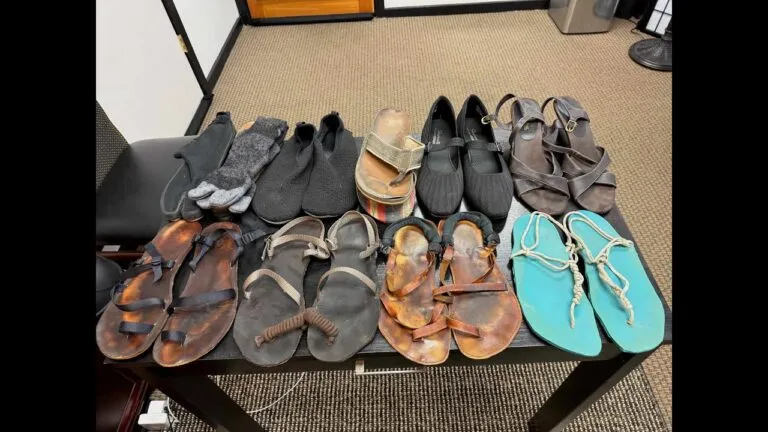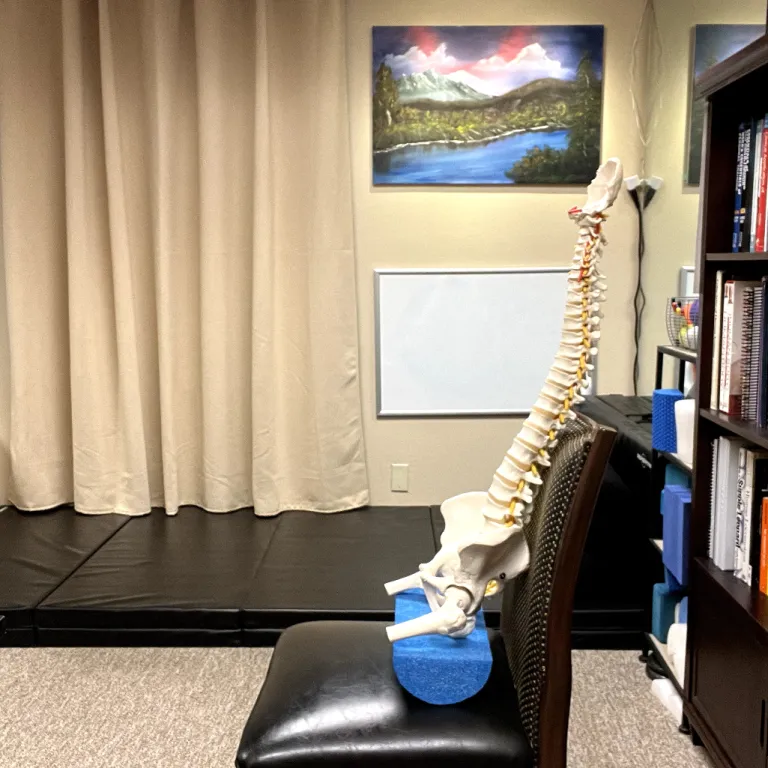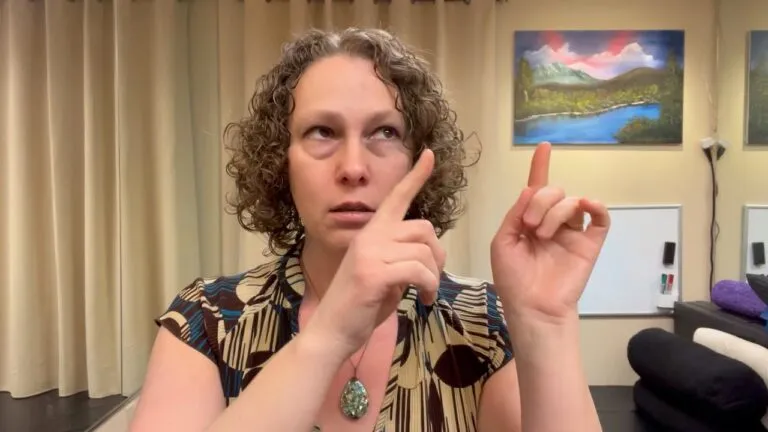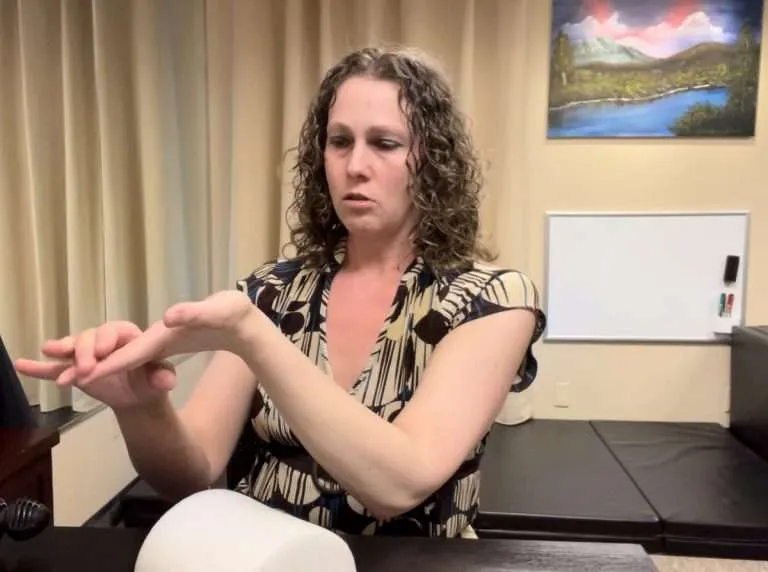Floor Sitting: How I Set Up a Comfortable Floor Desk with a Buckwheat Cushion

Hi, I’m Emily Boudwin from Restorative Health and Wellness. In this post I want to walk you through a practical, inexpensive approach to Floor Sitting during long work sessions — why I chose it, how I set up a small floor workstation, and a step-by-step tutorial so you can try it yourself. If you’ve felt stiff, sore, or stuck in the chair/standing desk cycle, Floor Sitting can be a simple way to introduce variety, movement, and whole-body practice into your daily routine.
Why Floor Sitting?
One of the big ideas I keep coming back to is that our bodies need variety. I say this because, as a neuromuscular massage therapist and restorative exercise specialist, I see how holding the same posture for hours can create tightness, pain, and reduced mobility. Floor Sitting breaks up the habit of prolonged chair-sitting and standing. When you sit on the floor, get up, and sit back down again, you recruit your entire body — legs, hips, core, and shoulders — to manage the transition.
In my own office, I work long shifts twice a week. I wanted something that would allow me to work productively while also encouraging movement. So I added two items: a buckwheat-filled cushion and a portable floor desk. Both together make Floor Sitting comfortable, flexible, and practical for long sessions.
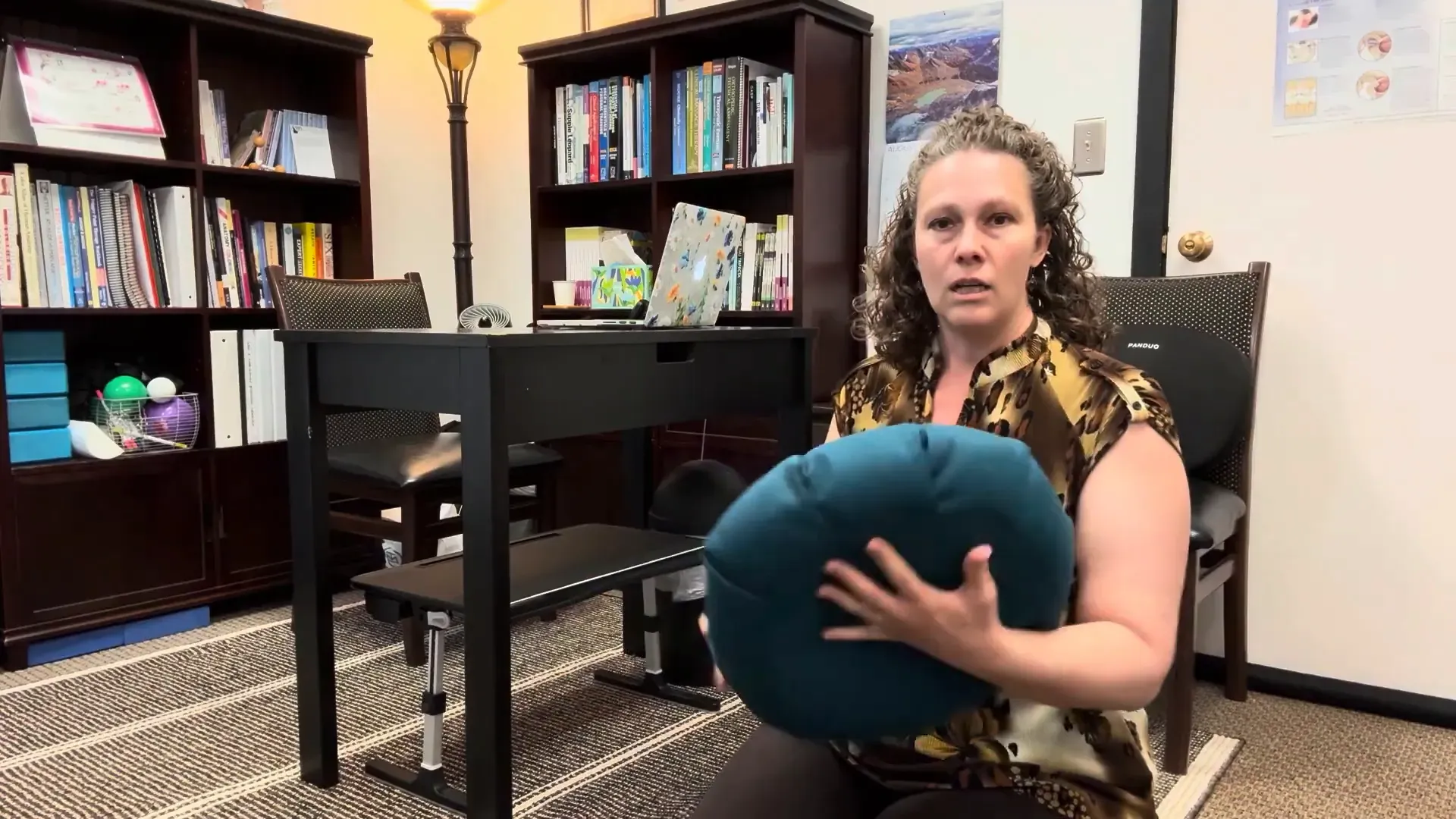
Benefits of Floor Sitting
- Increased movement frequency: When you’re on the floor, you naturally shift more often than when you’re slumped into a soft recliner. Those little adjustments every couple of minutes help circulation, joint mobility, and muscle activation.
- Whole-body engagement: Getting up and down requires strength and coordination from ankles to shoulders. That’s functional movement practice you rarely get from sitting in a chair.
- Improved posture awareness: Floor Sitting encourages you to notice how you place your pelvis, how you align your spine, and where you hold tension.
- Affordable and portable: A simple floor desk and cushion can be bought inexpensively. You can set them up near a wall, couch, or on a rug and move them as needed.
Tools I Use: Buckwheat Cushion and Portable Floor Desk
The two things that made Floor Sitting actually enjoyable for me were a buckwheat cushion and a small, tilt-capable floor desk. The cushion is stuffed with buckwheat hulls that conform to your sitting bones and ankles and give you a stable but forgiving surface. The desk is lightweight, tilts, and has a small lip to hold a laptop or paper.
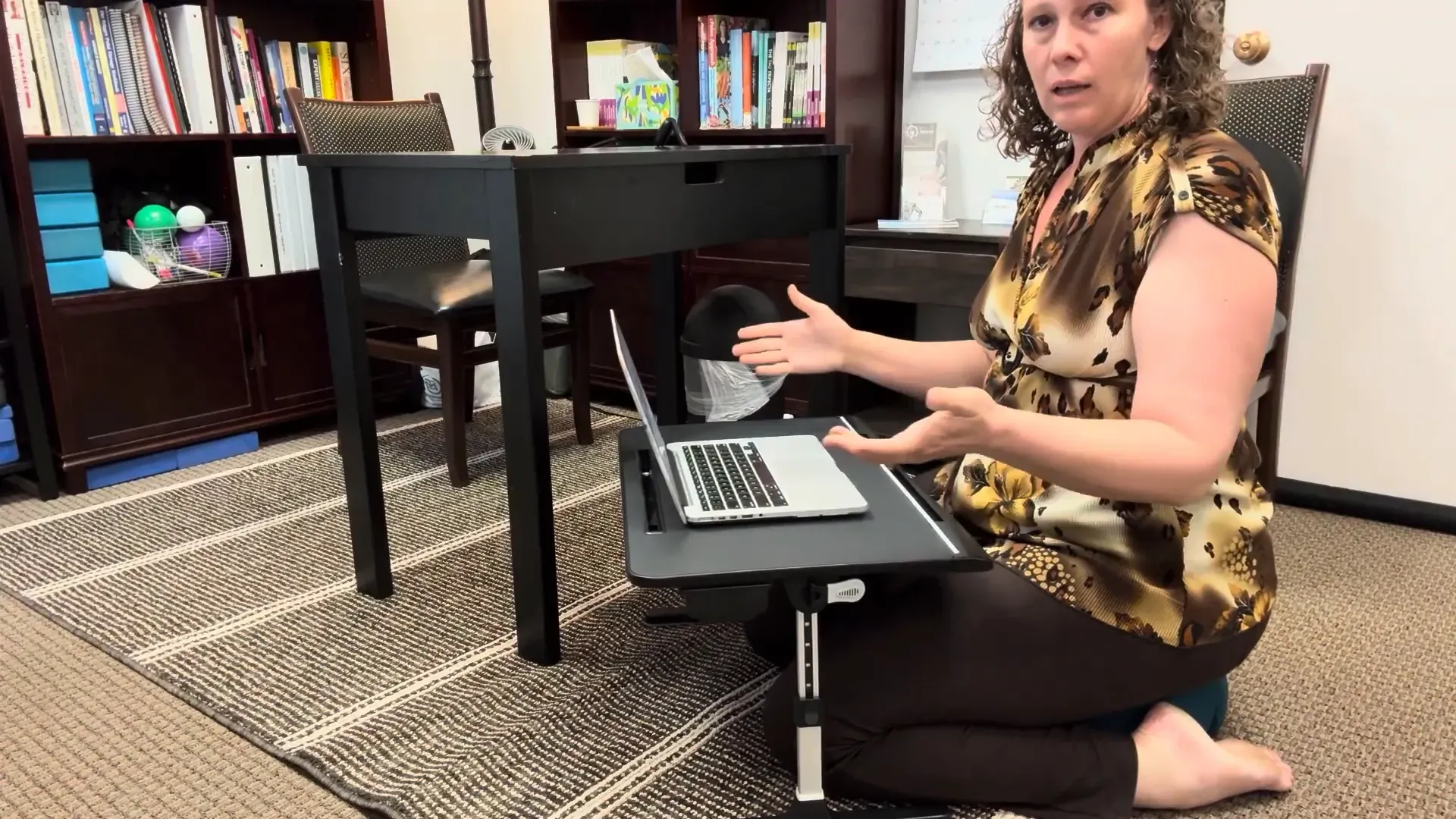
Practical features I like in a floor desk:
- A surface that can tilt so you can adjust viewing angle and reduce neck strain.
- A small ledge or slot to keep the laptop stable when tilted.
- Lightweight and easy to move so you can change your location often.
Step-by-Step Tutorial: Setting Up Your Floor Sitting Workstation
Below is the routine I use to turn my floor into an ergonomic, productive workspace. It’s written as a tutorial so you can replicate it step by step.
- Choose a surface: Find a flat, clean space on the floor close to an electrical outlet. A rug or yoga mat under you can add warmth and grip.
- Place your cushion: Set your buckwheat cushion where your pelvis will sit. I often sit to one side of the cushion to allow one leg to extend forward for a calf and ankle stretch. You can also sit squarely on the cushion for more upright work.
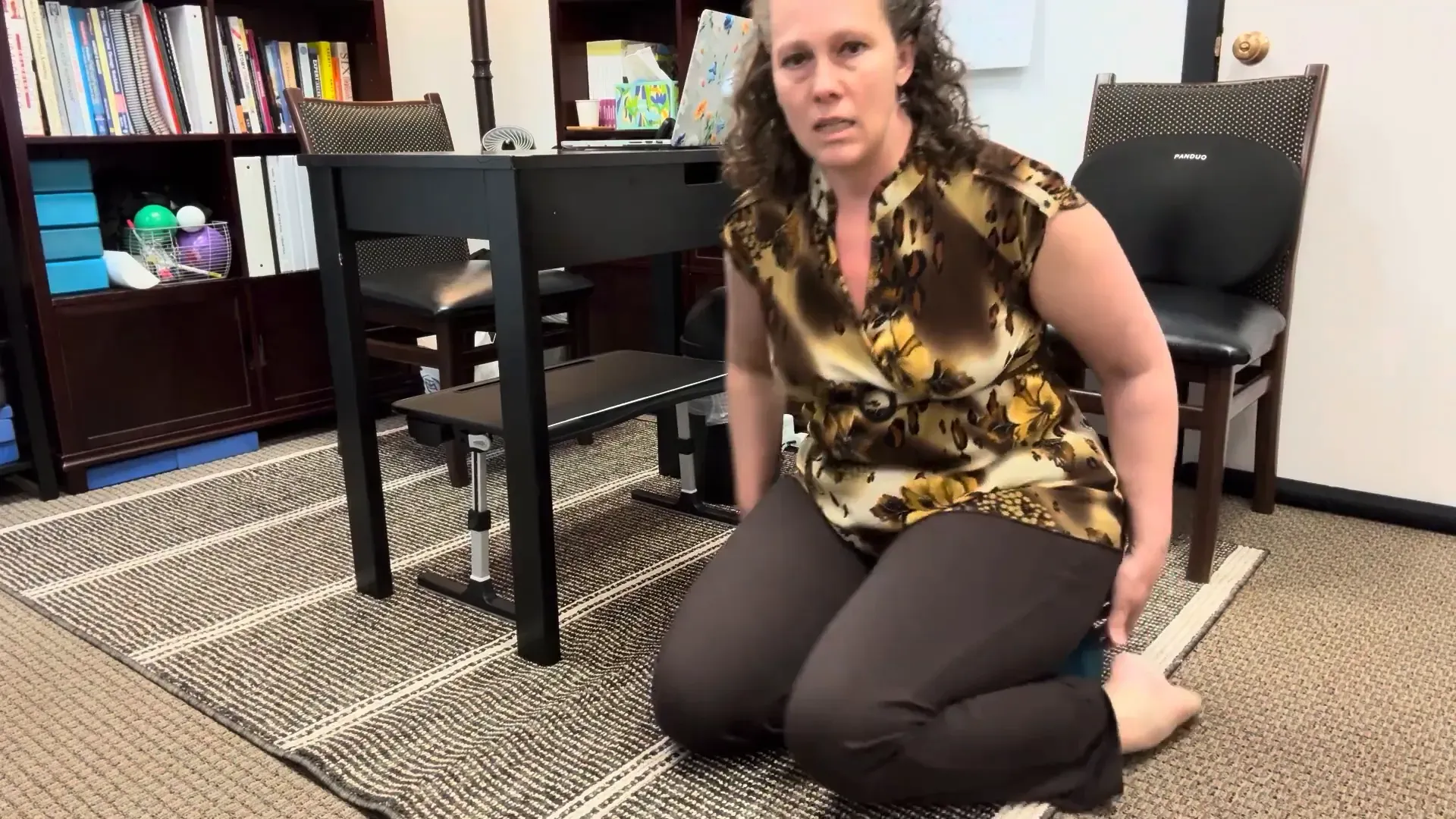
- Adjust the desk: Position the floor desk so your laptop screen is at a comfortable eye level. If your desk tilts, angle it slightly to reduce neck flexion. Ensure there’s a lip or slot at the desk edge to prevent the laptop from sliding.
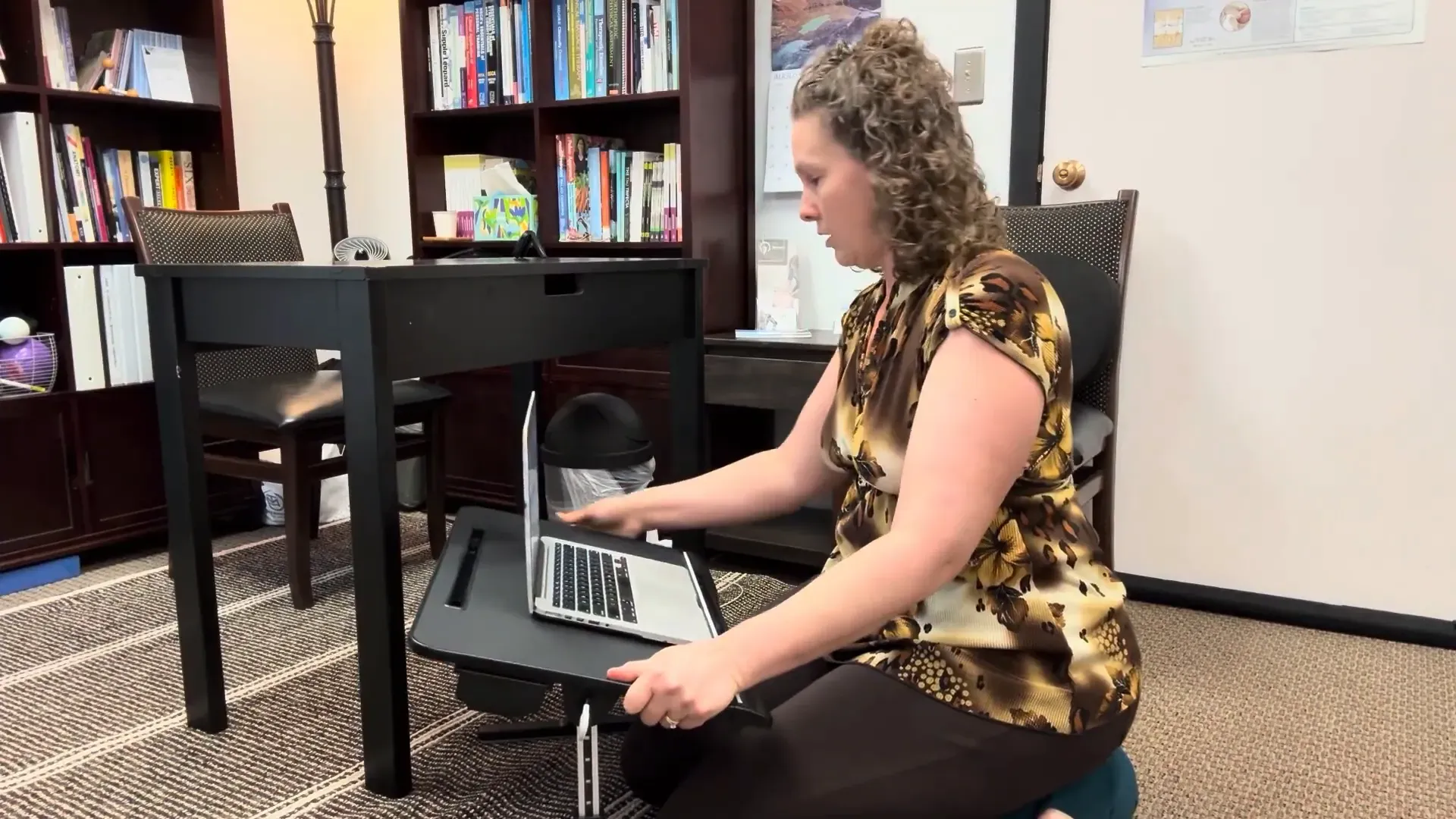
- Check lower limb positioning: Try different leg positions: both knees bent, one leg extended, or legs crossed. Each position changes the stretch and load on the hips and hamstrings. If you wear pants, sitting with one leg folded and the other extended gives a nice ankle and foot stretch.
- Plug in and secure cords: Bring your charging cord and any accessories nearby so you’re not twisting or reaching away from the workstation repeatedly.
- Set a movement reminder: Even though Floor Sitting encourages micro-movements, set a timer or habit cue to intentionally change positions and stand up every 30–60 minutes. Aim to stand, walk, or perform a short mobility break.
Quick positioning tips
- If one position feels tight, change it. The goal is variation, not rigid “perfect posture.”
- Use the cushion to elevate your pelvis; this reduces hamstring pull and lets the pelvis tilt forward slightly for more natural lumbar curve.
- When you sit with one leg extended, you’ll get an easy calf and ankle stretch. Try to alternate sides throughout the day.
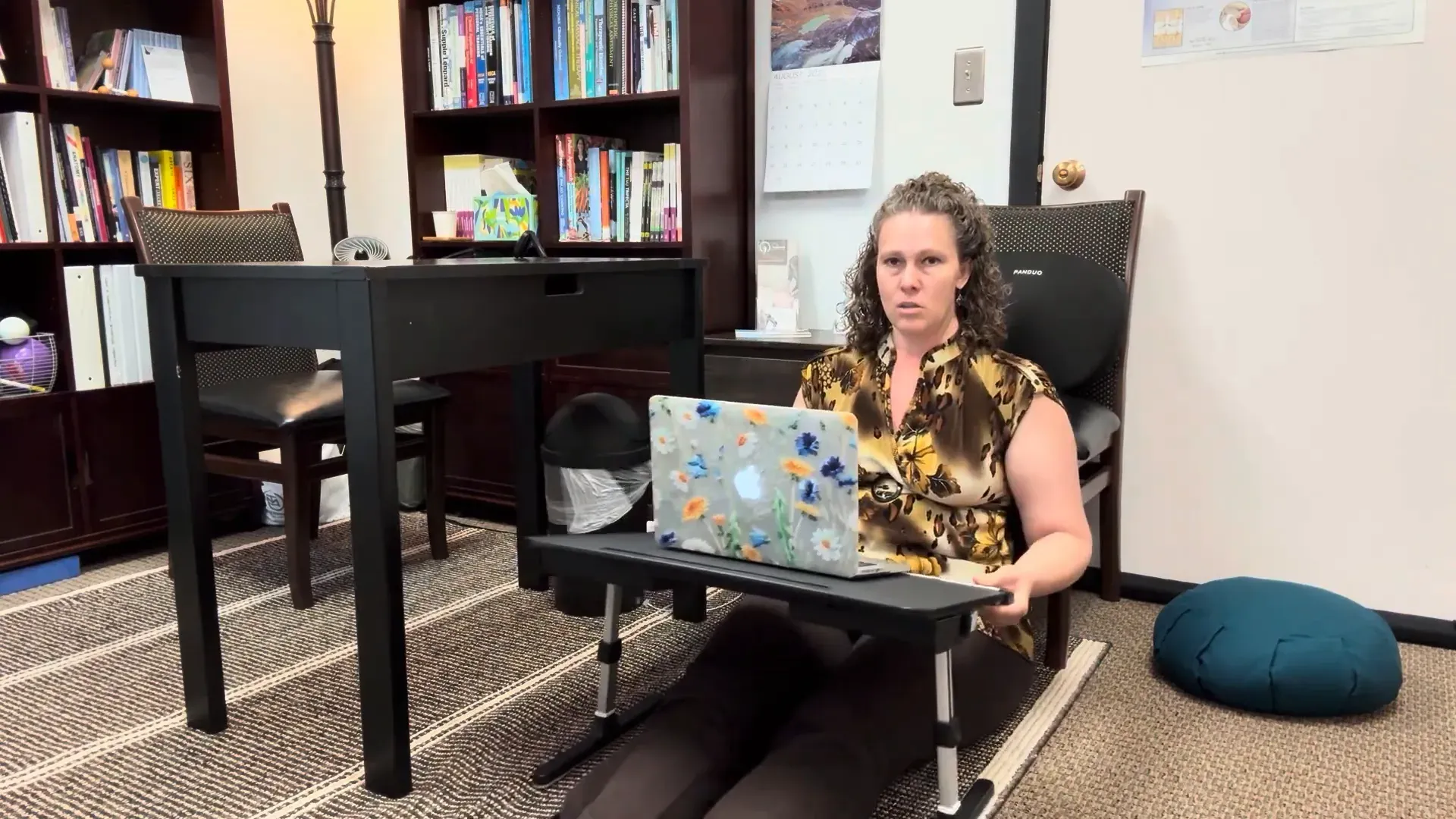
How to Get Up and Down Safely
Getting down to the floor and back up is part of the therapeutic value of Floor Sitting. It’s also where people can feel uncertain. Here’s a safe progression:
- Lower slowly: Turn to the side and lower one hip to the floor while keeping your shoulders over your hips. Control the descent with your hands on the floor or on a sturdy surface.
- Move into position: Once seated, find a stable arrangement of legs and cushion before you start working.
- Stand with a plan: When you’re ready to stand, bring your legs underneath you so both feet are planted. Lean forward slightly and press through the heels while pushing with your hands on your knees or the floor if needed.
- Use support if necessary: If rising is difficult, place the desk or a low coffee table nearby to push up from, or hold onto the arm of a nearby couch or chair.
Why Movement Every Two Minutes Matters
One point I emphasize in practice is that people tend to move when they’re not supremely comfortable. In overly soft chairs we can stay very still for long stretches. I notice that when I’m not in a plush chair, I move every couple of minutes — shifting weight, adjusting foot position, or changing leg orientation. Those small movements are crucial for whole-body health: they help fluid exchange, prevent stiff joints, and reduce the buildup of tension.
“That movement every two minutes is important for whole body health.” — Emily
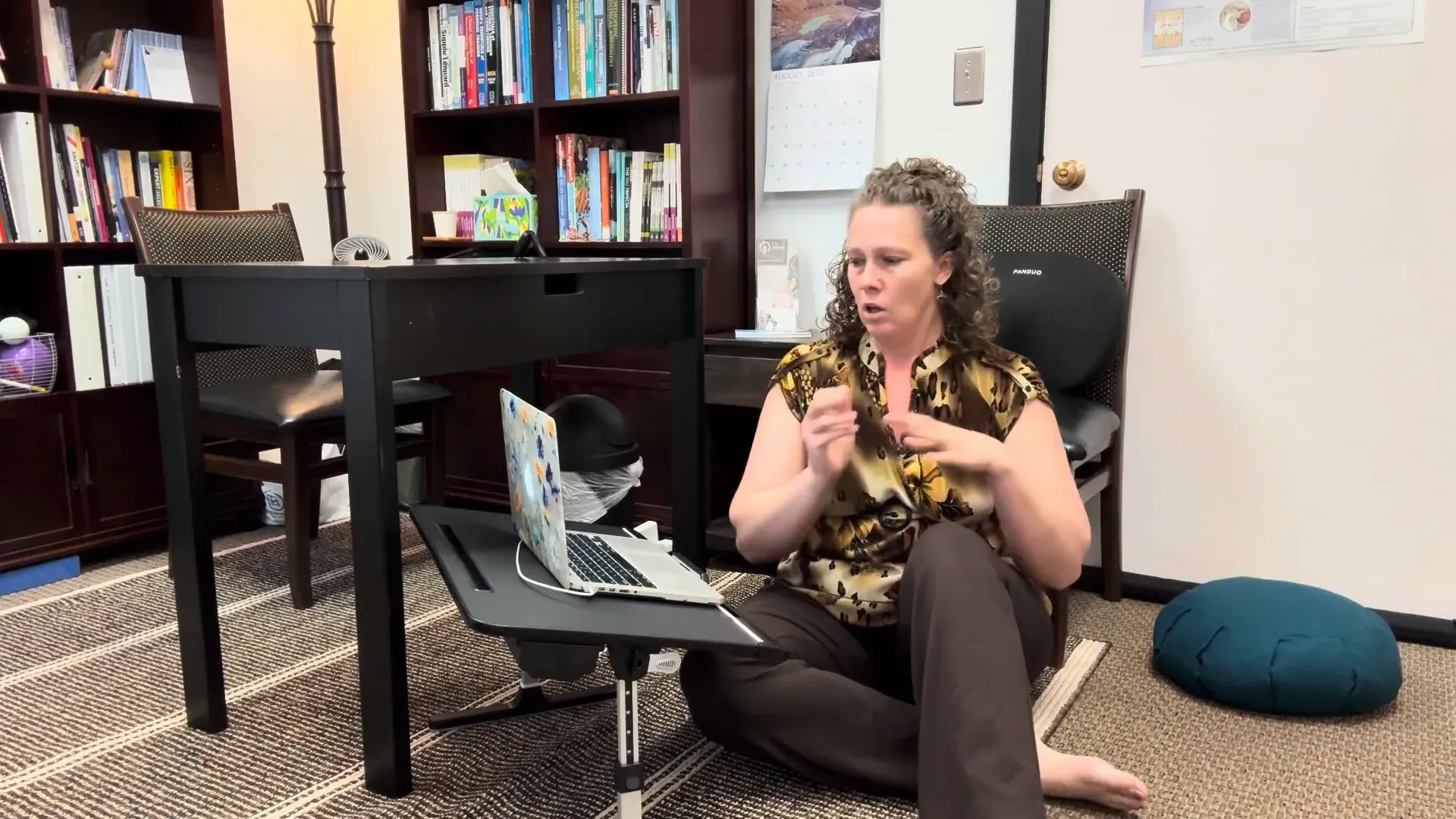
Cushion & Surface Options
A buckwheat cushion is my favorite because the hulls conform and allow subtle adjustments. If you don’t have a buckwheat cushion, you can use:
- Folded blanket or yoga bolster — softer but still supportive.
- Firm pillow or a folded towel for temporary support.
- A low stool or meditation bench to reduce hip flexion if you need it.
Try both cushion and no-cushion positions. Without a cushion you may get a deeper stretch through the leg and hips, but with the cushion you can relax and work longer.
Alternatives and Variations
If you don’t want a portable desk, a low coffee table can act similarly. The tradeoff is that coffee tables aren’t as easy to move around and may not tilt. You can also do Floor Sitting on a couch with your feet on the floor or tucked under you. The aim is to add options beyond standing or chair-sitting: Floor Sitting is just another way to keep the body adaptable.
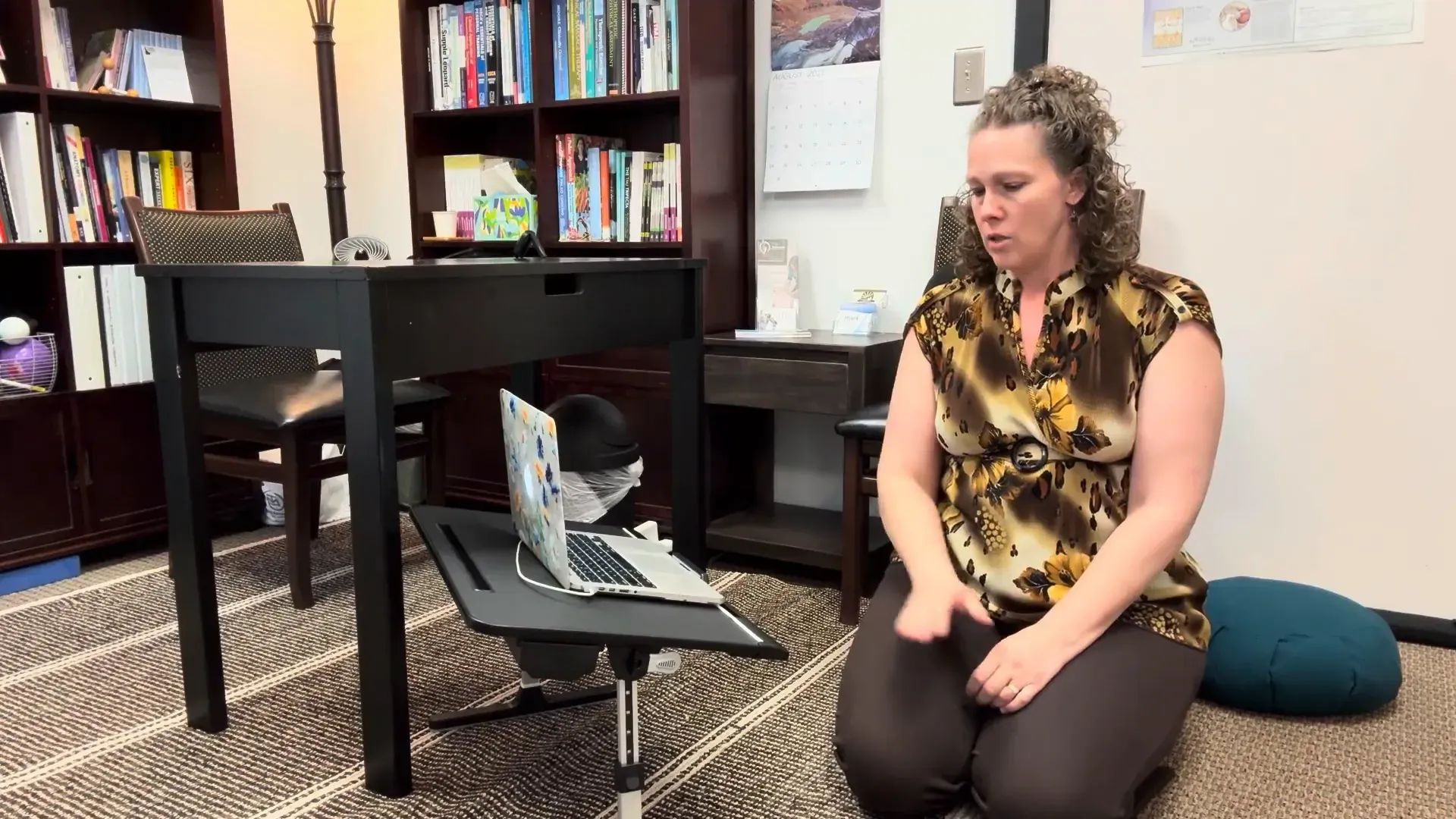
Safety and When to Avoid Floor Sitting
- Listen to your body. If a position causes sharp pain, stop and reassess.
- Avoid lengthy positions that cause numbness or pins-and-needles in the legs; stand up and move if that happens.
- If you have recent knee, hip, or ankle injuries, consult a healthcare professional before adding Floor Sitting to long work sessions.
Helpful Resources and Related Tutorials
Want to learn more about related topics like posture, psoas tightness, or hip stretches that pair well with Floor Sitting? Here are relevant resources from Restorative Health and Wellness that I recommend reading or watching alongside this tutorial:
- How to sit on your sitz bones — https://restorativehealthandwellness.com/video-sit-on-your-sitz-bones/
- Does your low back hurt? The psoas muscle could be the culprit — https://restorativehealthandwellness.com/does-your-low-back-hurt-the-psoas-muscle-could-be-the-culprit/
- Periformis and deep hip rotator stretches — https://restorativehealthandwellness.com/periformis-glute-deep-hip-rotators-4-stretch/
- Calf stretch tweaks — https://restorativehealthandwellness.com/calf-stretch-a-bit-of-a-twist/
- Relax your spine with a rhomboid pushup exercise — https://restorativehealthandwellness.com/relax-your-spine-with-this-rhomboid-pushup-exercise/
- General blog and resources — https://restorativehealthandwellness.com/blog/
- Contact and schedule a massage — https://restorativehealthandwellness.com/contact-us-and-schedule-your-massage/
Final Tips and My Personal Experience
Overall, I feel better when I give myself the option to Floor Sit. It’s not about forcing a single posture but about increasing movement options and functional transitions — the ability to get up and down from the floor with ease is a powerful marker of mobility and independence.
If you try this, start small. Test a 20–30 minute block, notice how your hips, knees, and lower back feel, and gradually increase time if it feels good. Mix it with standing, walking, and chair time for the healthiest routine.
Floor Sitting can be a low-cost, high-impact change to your workday that encourages micro-movements, reduces monotony, and builds functional mobility. Give it a try, and let your body tell you what works.
Want to Learn More or Book a Session?
If you want personalized guidance, check out Restorative Health and Wellness at the main site: https://restorativehealthandwellness.com. I also post frequent tutorials and self-massage guides that pair well with a movement-rich routine.
Thanks for reading — move well, and enjoy exploring Floor Sitting!
Did this post help you! |
|
Then sign up for our FREE Email Newsletter! |
| Sign Me Up! |


